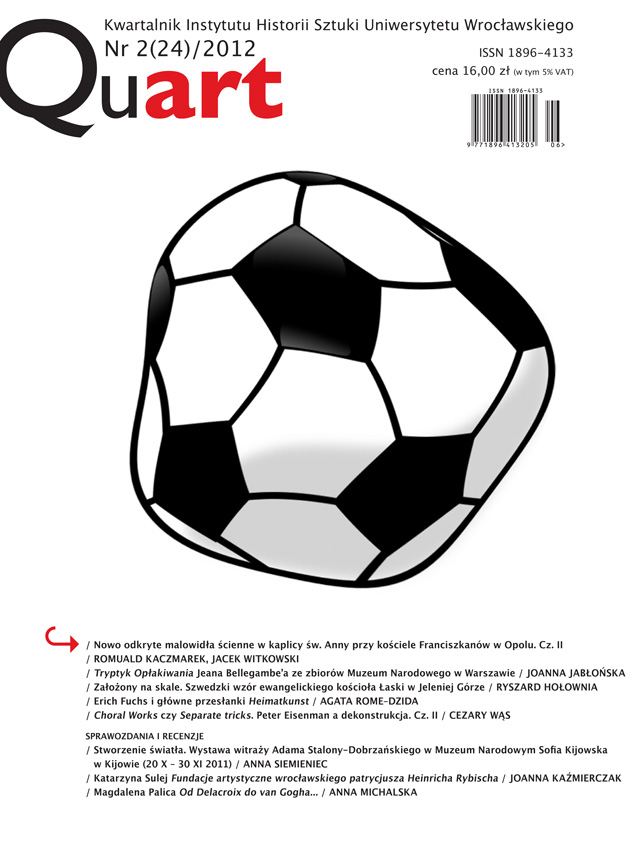Nowo odkryte malowidła ścienne w kaplicy św. Anny przy kościele Franciszkanów w Opolu. Cz. II
Newly discovered wall paintings in the chapel of St. Anna at the Franciscan church in Opole. Part II
Author(s): Jacek Witkowski, Romuald KaczmarekSubject(s): Fine Arts / Performing Arts, Visual Arts, History of Art
Published by: Wydawnictwo Uniwersytetu Wrocławskiego
Summary/Abstract: In the previous part of the article a history of the chapel and its painterly decoration as well as heraldic contents were discussed. They refer to Margrave Georg Hohenzollern’s earliest efforts to succeed in the Opole Duchy. The analysis of historic data indicates that in early autumn of 1509 Georg and his wife Beatrice Frangipan, who was expecting a baby at that time, could have met with duke John II. The painterly works were most probably initiated soon afterwards.The paintings comprise three types of forms: heraldic shields, angel orchestra and plants. Considering their forms, as the most traditional part come the angels whose way of presentation is of Netherlandish origins dating back at the second quarter of the 15th century. Whereas the Italian type of representation of the heraldic shields is modern, considering Silesia and Central Europe around 1510. They are surrounded by garlands and plants depicted with a great care and in a detailed way that enables the species identification.Despite the heraldic contents, the chapel’s decoration (angels playing, symbolics of plants) refers to its patroness St. Anna, as well as to Mary. However, equivocalness of symbolics of the depicted plants allows us to assume that the included connotations related with plenitude, fertility and marriage refer to the situation of the young couple of potential successors awaiting descendants. In this context the patronage of St. Anna is also meaningful.The paintings’ author appears as a creative personage extended between Late Gothic and Early Renaissance stylistics and tradition. Similar characteristics is ascribed to an executor of the decoration in the so-called Schatzkammer in the Frenzel’s House in Görlitz. Its plant presentation is the closest analogy with the one in Opole. Both sets of frescoes may be included in the same group of works as the partially preserved paintings in the town hall of Wrocław. All of them were probably created in the period between ca. 1510 and 1520, still the frescoes in Opole are the oldest.
Journal: Quart
- Issue Year: 24/2012
- Issue No: 2
- Page Range: 3-28
- Page Count: 26
- Language: Polish

